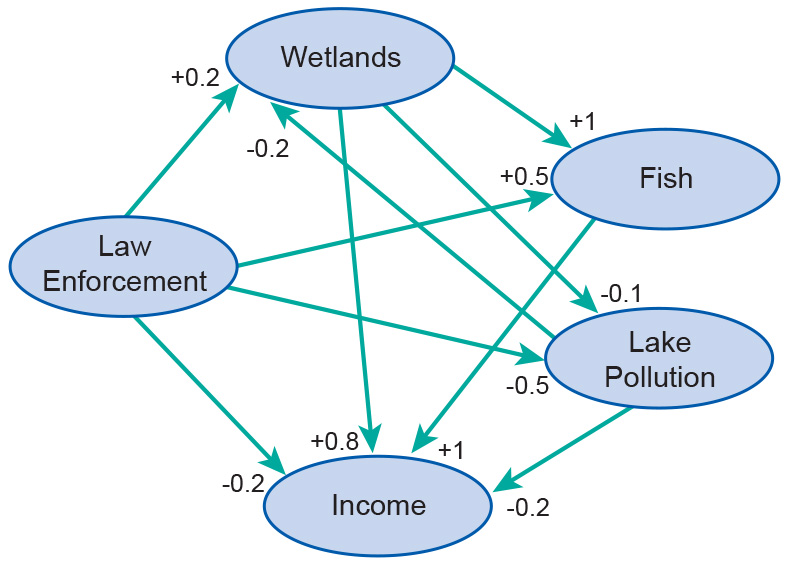Cognitive mapping
Introduction
A Fuzzy Cognitive Map (FCM) can be seen as the next step in formalizing a conceptual model. It consists of nodes (or concepts), which are the elements, or variables, with connections (or edges) between them that represent the causal relationships between the concepts. Each connection gets a weight (between 1 and 0) according to the strength of the causal relationship between the concepts in nodes.
Implicitly, the model requires decisions to be taken about which elements or activities to regulate through enforcement, what norms or standards to apply, and what sanctions to impose. Such matters are resolved through governance processes or systems. A relationship can be either positive (when growth in one concepts stimulates growth in the other one) or negative (when growth in one concepts inhibits growth in the other one). This graphical form can be represented in a mathematical form of a matrix that lists all the connections and a state vector made of the current weights of the concepts in the system. The next state of the system is then calculated by multiplying the vector by matrix. If iterated, the system may equilibrate, presenting a new state. Comparing the new and initial weights of variables can tell whether the system increases or decreases their importance through the connections. FCM focuses on feedbacks within a system. They can help frame the discussions with stakeholders, whose expert opinions can be used to put together the initial maps.
Examples
In this example, the role of human agents and their actions is implied in many of the nodes and their relations.

External resources
-
FCMapper
FCMapper is a free software package to process FCMs and calculate important metrics for them. It can be downloaded for free.
Outgoing relations
- Cognitive mapping is a kind of Implementation logic